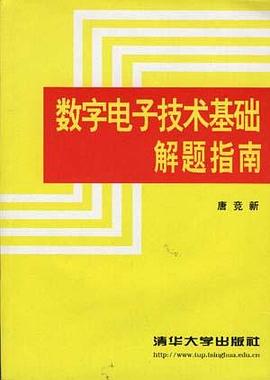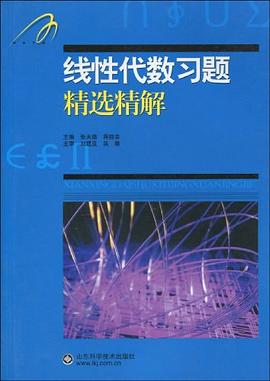

具體描述
著者簡介
圖書目錄
preface to the third edition
preface to the first edition
1. continuous population models for single species
1.1 continuous growth models
1.2 insect outbreak model: spruce budworm
1.3 delay models
1.4 linear analysis of delay population models: periodic solutions
1.5 delay models in physiology: periodic dynamic diseases
1.6 harvesting a single natural population
1.7 population model with age distribution
exercises
2. discrete population models for a single species
2.1 introduction: simple models
2.2 cobwebbing: a graphical procedure of solution
2.3 discrete logistic-type model: chaos
2.4 stability, periodic solutions and bifurcations
2.5 discrete delay models
2.6 fishery management model
.2.7 ecological implications and caveats
2.8 tumour cell growth
exercises
3. models for interacting populations
3.1 predator-prey models: lotka-volterra systems
3.2 complexity and stability
3.3 realistic predator-prey models
3.4 analysis of a predator-prey model with limit cycle periodic behaviour: parameter domains of stability
3.5 competition models: competitive exclusion principle
3.6 mutualism or symbiosis
3.7 general models and cautionary remarks
3.8 threshold phenomena
3.9 discrete growth models for interacting populations
3.10 predator-prey models: detailed analysis
exercises
4. temperature-dependent sex determination (tsd)
4.1 biological introduction and historical asides on the crocodilia.
4.2 nesting assumptions and simple population model
4.3 age-structured population model for crocodilia
4.4 density-dependent age-structured model equations
4.5 stability of the female population in wet marsh region l
4.6 sex ratio and survivorship
4.7 temperature-dependent sex determination (tsd) versus genetic sex determination (gsd)
4.8 related aspects on sex determination
exercise
5. modelling the dynamics of marital interaction: divorce prediction and marriage repair
5.1 psychological background and data: gottman and levenson methodology
5.2 marital typology and modelling motivation
5.3 modelling strategy and the model equations
5.4 steady states and stability
5.5 practical results from the model
5.6 benefits, implications and marriage repair scenarios
6. reaction kinetics
6.1 enzyme kinetics: basic enzyme reaction
6.2 transient time estimates and nondimensionalisation
6.3 michaelis-menten quasi-steady state analysis
6.4 suicide substrate kinetics
6.5 cooperative phenomena
6.6 autocatalysis, activation and inhibition
6.7 multiple steady states, mushrooms and isolas
exercises
7. biological oscillators and switches
7.1 motivation, brief history and background
7.2 feedback control mechanisms
7.3 oscillators and switches with two or more species: general qualitative results
7.4 simple two-species oscillators: parameter domain determination for oscillations
7.5 hodgkin-huxley theory of nerve membranes:fitzhugh-nagumo model
7.6 modelling the control of testosterone secretion and chemical castration
exercises
8. bz oscillating reactions
8.1 belousov reaction and the field-koros-noyes (fkn) model
8.2 linear stability analysis of the fkn model and existence of limit cycle solutions
8.3 nonlocal stability of the fkn model
8.4 relaxation oscillators: approximation for the belousov-zhabotinskii reaction
8.5 analysis of a relaxation model for limit cycle oscillations in the belousov-zhabotinskii reaction
exercises
9. perturbed and coupled oscillators and black holes
9.1 phase resetting in oscillators
9.2 phase resetting curves
9.3 black holes
9.4 black holes in real biological oscillators
9.5 coupled oscillators: motivation and model system
9.6 phase locking of oscillations: synchronisation in fireflies
9.7 singular perturbation analysis: preliminary transformation
9.8 singular perturbation analysis: transformed system
9.9 singular perturbation analysis: two-time expansion
9.10 analysis of the phase shift equation and application to coupled belousov-zhabotinskii reactions
exercises
10. dynamics of infectious diseases
10.1 historical aside on epidemics
10.2 simple epidemic models and practical applications
10.3 modelling venereal diseases
10.4 multi-group model for gonorrhea and its control
10.5 aids: modelling the transmission dynamics of the human immunodeficiency virus (hiv)
10.6 hiv: modelling combination drug therapy
10.7 delay model for hiv infection with drug therapy
10.8 modelling the population dynamics of acquired immunity to parasite infection
10.9 age-dependent epidemic model and threshold criterion
10.10 simple drug use epidemic model and threshold analysis
10.11 bovine tuberculosis infection in badgers and caule
10.12 modelling control strategies for bovine tuberculosis in badgers and cattle
exercises
11. reaction diffusion, chemotaxis, and noniocal mechanisms
11.1 simple random walk and derivation of the diffusion equation
11.2 reaction diffusion equations
11.3 models for animal dispersal
11.4 chemotaxis
11.5 nonlocal effects and long range diffusion
11.6 cell potential and energy approach to diffusion and long range effects
exercises
12. oscillator-generated wave phenomena
12. i belousov-zhabotinskii reaction kinematic waves
12.2 central pattern generator: experimental facts in the swimming of fish
12.3 mathematical model for the central pattern generator
12.4 analysis of the phase coupled model system
exercises
13. biological waves: single-species models
13. l background and the travelling waveform
13.2 fisher-kolmogoroff equation and propagating wave solutions
13.3 asymptotic solution and stability of wavefront solutions of the fisher-kolmogoroff equation
13.4 density-dependent diffusion-reaction diffusion models and some exact solutions
13.5 waves in models with multi-steady state kinetics: spread and control of an insect population
13.6 calcium waves on amphibian eggs: activation waves on medaka eggs
13.7 invasion wavespeeds with dispersive variability
13.8 species invasion and range expansion
exercises
14. use and abuse of fractals
14.1 fractals: basic concepts and biological relevance
14.2 examples of fractals and their generation
14.3 fractal dimension: concepts and methods of calculation
14.4 fractals or space-filling?
appendices
a. phase plane analysis
b. routh-hurwitz conditions, jury conditions, descartes'
rule of signs, and exact solutions of a cubic
b.1 polynomials and conditions
b.2 descartes' rule of signs
b.3 roots of a general cubic polynomial
bibliography
index
· · · · · · (收起)
preface to the first edition
1. continuous population models for single species
1.1 continuous growth models
1.2 insect outbreak model: spruce budworm
1.3 delay models
1.4 linear analysis of delay population models: periodic solutions
1.5 delay models in physiology: periodic dynamic diseases
1.6 harvesting a single natural population
1.7 population model with age distribution
exercises
2. discrete population models for a single species
2.1 introduction: simple models
2.2 cobwebbing: a graphical procedure of solution
2.3 discrete logistic-type model: chaos
2.4 stability, periodic solutions and bifurcations
2.5 discrete delay models
2.6 fishery management model
.2.7 ecological implications and caveats
2.8 tumour cell growth
exercises
3. models for interacting populations
3.1 predator-prey models: lotka-volterra systems
3.2 complexity and stability
3.3 realistic predator-prey models
3.4 analysis of a predator-prey model with limit cycle periodic behaviour: parameter domains of stability
3.5 competition models: competitive exclusion principle
3.6 mutualism or symbiosis
3.7 general models and cautionary remarks
3.8 threshold phenomena
3.9 discrete growth models for interacting populations
3.10 predator-prey models: detailed analysis
exercises
4. temperature-dependent sex determination (tsd)
4.1 biological introduction and historical asides on the crocodilia.
4.2 nesting assumptions and simple population model
4.3 age-structured population model for crocodilia
4.4 density-dependent age-structured model equations
4.5 stability of the female population in wet marsh region l
4.6 sex ratio and survivorship
4.7 temperature-dependent sex determination (tsd) versus genetic sex determination (gsd)
4.8 related aspects on sex determination
exercise
5. modelling the dynamics of marital interaction: divorce prediction and marriage repair
5.1 psychological background and data: gottman and levenson methodology
5.2 marital typology and modelling motivation
5.3 modelling strategy and the model equations
5.4 steady states and stability
5.5 practical results from the model
5.6 benefits, implications and marriage repair scenarios
6. reaction kinetics
6.1 enzyme kinetics: basic enzyme reaction
6.2 transient time estimates and nondimensionalisation
6.3 michaelis-menten quasi-steady state analysis
6.4 suicide substrate kinetics
6.5 cooperative phenomena
6.6 autocatalysis, activation and inhibition
6.7 multiple steady states, mushrooms and isolas
exercises
7. biological oscillators and switches
7.1 motivation, brief history and background
7.2 feedback control mechanisms
7.3 oscillators and switches with two or more species: general qualitative results
7.4 simple two-species oscillators: parameter domain determination for oscillations
7.5 hodgkin-huxley theory of nerve membranes:fitzhugh-nagumo model
7.6 modelling the control of testosterone secretion and chemical castration
exercises
8. bz oscillating reactions
8.1 belousov reaction and the field-koros-noyes (fkn) model
8.2 linear stability analysis of the fkn model and existence of limit cycle solutions
8.3 nonlocal stability of the fkn model
8.4 relaxation oscillators: approximation for the belousov-zhabotinskii reaction
8.5 analysis of a relaxation model for limit cycle oscillations in the belousov-zhabotinskii reaction
exercises
9. perturbed and coupled oscillators and black holes
9.1 phase resetting in oscillators
9.2 phase resetting curves
9.3 black holes
9.4 black holes in real biological oscillators
9.5 coupled oscillators: motivation and model system
9.6 phase locking of oscillations: synchronisation in fireflies
9.7 singular perturbation analysis: preliminary transformation
9.8 singular perturbation analysis: transformed system
9.9 singular perturbation analysis: two-time expansion
9.10 analysis of the phase shift equation and application to coupled belousov-zhabotinskii reactions
exercises
10. dynamics of infectious diseases
10.1 historical aside on epidemics
10.2 simple epidemic models and practical applications
10.3 modelling venereal diseases
10.4 multi-group model for gonorrhea and its control
10.5 aids: modelling the transmission dynamics of the human immunodeficiency virus (hiv)
10.6 hiv: modelling combination drug therapy
10.7 delay model for hiv infection with drug therapy
10.8 modelling the population dynamics of acquired immunity to parasite infection
10.9 age-dependent epidemic model and threshold criterion
10.10 simple drug use epidemic model and threshold analysis
10.11 bovine tuberculosis infection in badgers and caule
10.12 modelling control strategies for bovine tuberculosis in badgers and cattle
exercises
11. reaction diffusion, chemotaxis, and noniocal mechanisms
11.1 simple random walk and derivation of the diffusion equation
11.2 reaction diffusion equations
11.3 models for animal dispersal
11.4 chemotaxis
11.5 nonlocal effects and long range diffusion
11.6 cell potential and energy approach to diffusion and long range effects
exercises
12. oscillator-generated wave phenomena
12. i belousov-zhabotinskii reaction kinematic waves
12.2 central pattern generator: experimental facts in the swimming of fish
12.3 mathematical model for the central pattern generator
12.4 analysis of the phase coupled model system
exercises
13. biological waves: single-species models
13. l background and the travelling waveform
13.2 fisher-kolmogoroff equation and propagating wave solutions
13.3 asymptotic solution and stability of wavefront solutions of the fisher-kolmogoroff equation
13.4 density-dependent diffusion-reaction diffusion models and some exact solutions
13.5 waves in models with multi-steady state kinetics: spread and control of an insect population
13.6 calcium waves on amphibian eggs: activation waves on medaka eggs
13.7 invasion wavespeeds with dispersive variability
13.8 species invasion and range expansion
exercises
14. use and abuse of fractals
14.1 fractals: basic concepts and biological relevance
14.2 examples of fractals and their generation
14.3 fractal dimension: concepts and methods of calculation
14.4 fractals or space-filling?
appendices
a. phase plane analysis
b. routh-hurwitz conditions, jury conditions, descartes'
rule of signs, and exact solutions of a cubic
b.1 polynomials and conditions
b.2 descartes' rule of signs
b.3 roots of a general cubic polynomial
bibliography
index
· · · · · · (收起)
讀後感
評分
評分
評分
評分
評分
用戶評價
评分
评分
评分
评分
评分
相關圖書
本站所有內容均為互聯網搜索引擎提供的公開搜索信息,本站不存儲任何數據與內容,任何內容與數據均與本站無關,如有需要請聯繫相關搜索引擎包括但不限於百度,google,bing,sogou 等
© 2025 book.quotespace.org All Rights Reserved. 小美書屋 版权所有




















